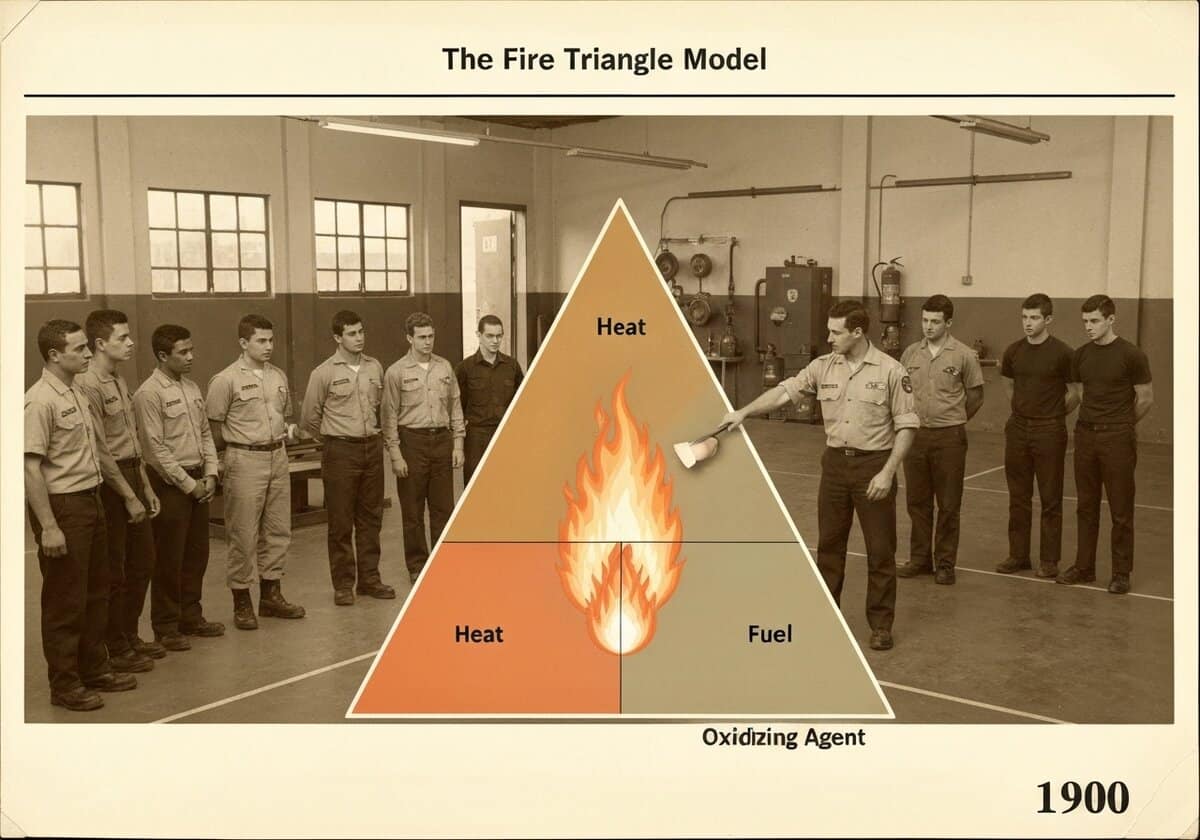The fire triangle is a simple model illustrating the three essential elements required for most fires: heat, fuel, and an oxidizing agent, typically atmospheric oxygen. Removing any one of these elements prevents a fire from starting or causes an existing fire to be extinguished. It is a fundamental concept in fire safety and prevention.
The fire triangle, also known as the combustion triangle, is a foundational model in fire safety science. It visually represents the three necessary components for ignition and sustained combustion. The first side is ‘Heat’, which provides the energy required to raise the fuel to its ignition temperature and maintain the combustion process; this is the activation energy for the reaction. The second side is ‘Fuel’, which is any combustible material in a solid, liquid, or gaseous state. For combustion to occur, solid and liquid fuels must typically be vaporized or pyrolyzed into a gaseous state. The third side is the ‘Oxidizing Agent’, a substance that reacts chemically with the fuel, with the most common being oxygen from the ambient air. The model’s simplicity makes it an effective educational tool for explaining how fires start and how they can be prevented or extinguished. By understanding that fire requires all three elements simultaneously, one can devise strategies to break the triangle and stop the fire. For example, applying water removes heat, creating a firebreak removes fuel, and using a CO2 extinguisher displaces oxygen.
















